Bhaskar Krishnamachari
Learning Wireless Interference Patterns: Decoupled GNN for Throughput Prediction in Heterogeneous Multi-Hop p-CSMA Networks
Oct 15, 2025Abstract:The p-persistent CSMA protocol is central to random-access MAC analysis, but predicting saturation throughput in heterogeneous multi-hop wireless networks remains a hard problem. Simplified models that assume a single, shared interference domain can underestimate throughput by 48--62\% in sparse topologies. Exact Markov-chain analyses are accurate but scale exponentially in computation time, making them impractical for large networks. These computational barriers motivate structural machine learning approaches like GNNs for scalable throughput prediction in general network topologies. Yet off-the-shelf GNNs struggle here: a standard GCN yields 63.94\% normalized mean absolute error (NMAE) on heterogeneous networks because symmetric normalization conflates a node's direct interference with higher-order, cascading effects that pertain to how interference propagates over the network graph. Building on these insights, we propose the Decoupled Graph Convolutional Network (D-GCN), a novel architecture that explicitly separates processing of a node's own transmission probability from neighbor interference effects. D-GCN replaces mean aggregation with learnable attention, yielding interpretable, per-neighbor contribution weights while capturing complex multihop interference patterns. D-GCN attains 3.3\% NMAE, outperforms strong baselines, remains tractable even when exact analytical methods become computationally infeasible, and enables gradient-based network optimization that achieves within 1\% of theoretical optima.
Crowd-SFT: Crowdsourcing for LLM Alignment
Jun 04, 2025Abstract:Large Language Models (LLMs) increasingly rely on Supervised Fine-Tuning (SFT) and Reinforcement Learning from Human Feedback (RLHF) to align model responses with human preferences. While RLHF employs a reinforcement learning approach with a separate reward model, SFT uses human-curated datasets for supervised learning. Both approaches traditionally depend on small, vetted groups of annotators, making them costly, prone to bias, and limited in scalability. We propose an open, crowd-sourced fine-tuning framework that addresses these limitations by enabling broader feedback collection for SFT without extensive annotator training. Our framework promotes incentive fairness via a point-based reward system correlated with Shapley values and guides model convergence through iterative model updates. Our multi-model selection framework demonstrates up to a 55% reduction in target distance over single-model selection, enabling subsequent experiments that validate our point-based reward mechanism's close alignment with Shapley values (a well-established method for attributing individual contributions) thereby supporting fair and scalable participation.
AffectEval: A Modular and Customizable Framework for Affective Computing
Apr 29, 2025Abstract:The field of affective computing focuses on recognizing, interpreting, and responding to human emotions, and has broad applications across education, child development, and human health and wellness. However, developing affective computing pipelines remains labor-intensive due to the lack of software frameworks that support multimodal, multi-domain emotion recognition applications. This often results in redundant effort when building pipelines for different applications. While recent frameworks attempt to address these challenges, they remain limited in reducing manual effort and ensuring cross-domain generalizability. We introduce AffectEval, a modular and customizable framework to facilitate the development of affective computing pipelines while reducing the manual effort and duplicate work involved in developing such pipelines. We validate AffectEval by replicating prior affective computing experiments, and we demonstrate that our framework reduces programming effort by up to 90%, as measured by the reduction in raw lines of code.
Evaluating ChatGPT-3.5 Efficiency in Solving Coding Problems of Different Complexity Levels: An Empirical Analysis
Nov 12, 2024
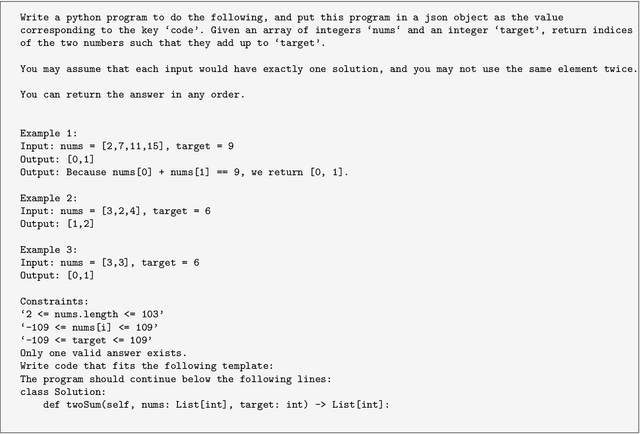
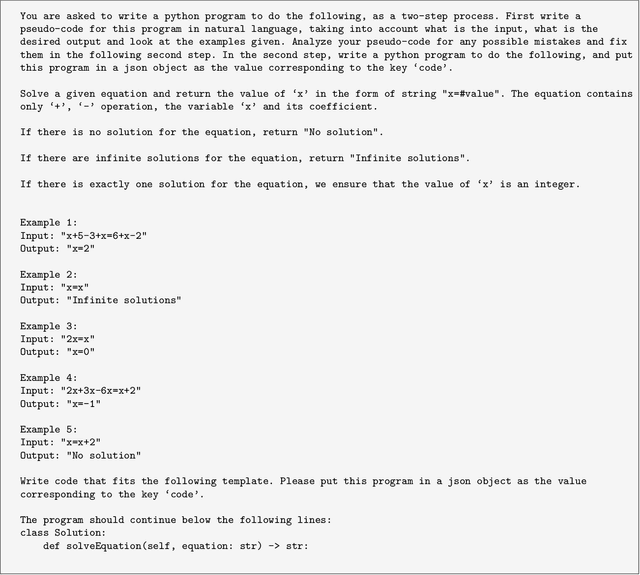
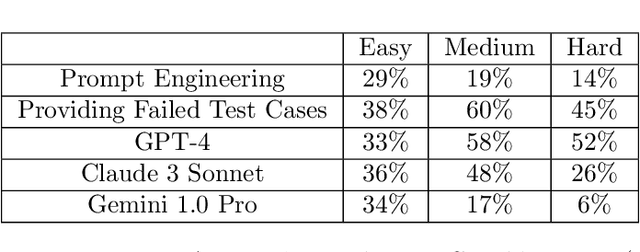
Abstract:ChatGPT and other large language models (LLMs) promise to revolutionize software development by automatically generating code from program specifications. We assess the performance of ChatGPT's GPT-3.5-turbo model on LeetCode, a popular platform with algorithmic coding challenges for technical interview practice, across three difficulty levels: easy, medium, and hard. We test three main hypotheses. First, ChatGPT solves fewer problems as difficulty rises (Hypothesis 1). Second, prompt engineering improves ChatGPT's performance, with greater gains on easier problems and diminishing returns on harder ones (Hypothesis 2). Third, ChatGPT performs better in popular languages like Python, Java, and C++ than in less common ones like Elixir, Erlang, and Racket (Hypothesis 3). To investigate these hypotheses, we conduct automated experiments using Python scripts to generate prompts that instruct ChatGPT to create Python solutions. These solutions are stored and manually submitted on LeetCode to check their correctness. For Hypothesis 1, results show the GPT-3.5-turbo model successfully solves 92% of easy, 79% of medium, and 51% of hard problems. For Hypothesis 2, prompt engineering yields improvements: 14-29% for Chain of Thought Prompting, 38-60% by providing failed test cases in a second feedback prompt, and 33-58% by switching to GPT-4. From a random subset of problems ChatGPT solved in Python, it also solved 78% in Java, 50% in C++, and none in Elixir, Erlang, or Racket. These findings generally validate all three hypotheses.
Artificial Intelligence of Things: A Survey
Oct 25, 2024



Abstract:The integration of the Internet of Things (IoT) and modern Artificial Intelligence (AI) has given rise to a new paradigm known as the Artificial Intelligence of Things (AIoT). In this survey, we provide a systematic and comprehensive review of AIoT research. We examine AIoT literature related to sensing, computing, and networking & communication, which form the three key components of AIoT. In addition to advancements in these areas, we review domain-specific AIoT systems that are designed for various important application domains. We have also created an accompanying GitHub repository, where we compile the papers included in this survey: https://github.com/AIoT-MLSys-Lab/AIoT-Survey. This repository will be actively maintained and updated with new research as it becomes available. As both IoT and AI become increasingly critical to our society, we believe AIoT is emerging as an essential research field at the intersection of IoT and modern AI. We hope this survey will serve as a valuable resource for those engaged in AIoT research and act as a catalyst for future explorations to bridge gaps and drive advancements in this exciting field.
* Accepted in ACM Transactions on Sensor Networks (TOSN)
RiskSEA : A Scalable Graph Embedding for Detecting On-chain Fraudulent Activities on the Ethereum Blockchain
Oct 03, 2024



Abstract:Like any other useful technology, cryptocurrencies are sometimes used for criminal activities. While transactions are recorded on the blockchain, there exists a need for a more rapid and scalable method to detect addresses associated with fraudulent activities. We present RiskSEA, a scalable risk scoring system capable of effectively handling the dynamic nature of large-scale blockchain transaction graphs. The risk scoring system, which we implement for Ethereum, consists of 1. a scalable approach to generating node2vec embedding for entire set of addresses to capture the graph topology 2. transaction-based features to capture the transactional behavioral pattern of an address 3. a classifier model to generate risk score for addresses that combines the node2vec embedding and behavioral features. Efficiently generating node2vec embedding for large scale and dynamically evolving blockchain transaction graphs is challenging, we present two novel approaches for generating node2vec embeddings and effectively scaling it to the entire set of blockchain addresses: 1. node2vec embedding propagation and 2. dynamic node2vec embedding. We present a comprehensive analysis of the proposed approaches. Our experiments show that combining both behavioral and node2vec features boosts the classification performance significantly, and that the dynamic node2vec embeddings perform better than the node2vec propagated embeddings.
GKAN: Graph Kolmogorov-Arnold Networks
Jun 10, 2024Abstract:We introduce Graph Kolmogorov-Arnold Networks (GKAN), an innovative neural network architecture that extends the principles of the recently proposed Kolmogorov-Arnold Networks (KAN) to graph-structured data. By adopting the unique characteristics of KANs, notably the use of learnable univariate functions instead of fixed linear weights, we develop a powerful model for graph-based learning tasks. Unlike traditional Graph Convolutional Networks (GCNs) that rely on a fixed convolutional architecture, GKANs implement learnable spline-based functions between layers, transforming the way information is processed across the graph structure. We present two different ways to incorporate KAN layers into GKAN: architecture 1 -- where the learnable functions are applied to input features after aggregation and architecture 2 -- where the learnable functions are applied to input features before aggregation. We evaluate GKAN empirically using a semi-supervised graph learning task on a real-world dataset (Cora). We find that architecture generally performs better. We find that GKANs achieve higher accuracy in semi-supervised learning tasks on graphs compared to the traditional GCN model. For example, when considering 100 features, GCN provides an accuracy of 53.5 while a GKAN with a comparable number of parameters gives an accuracy of 61.76; with 200 features, GCN provides an accuracy of 61.24 while a GKAN with a comparable number of parameters gives an accuracy of 67.66. We also present results on the impact of various parameters such as the number of hidden nodes, grid-size, and the polynomial-degree of the spline on the performance of GKAN.
Smart Routing with Precise Link Estimation: DSEE-Based Anypath Routing for Reliable Wireless Networking
May 16, 2024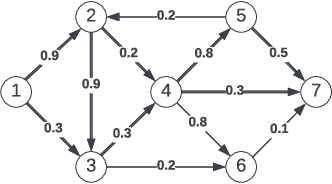
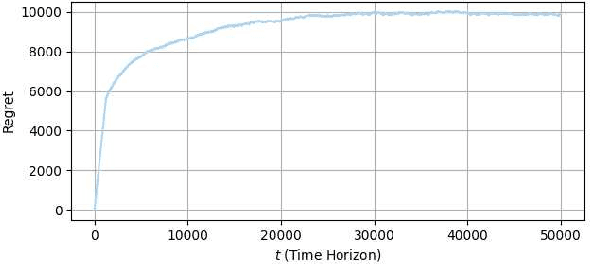
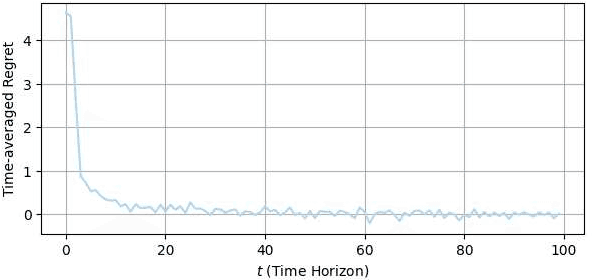
Abstract:In dynamic and resource-constrained environments, such as multi-hop wireless mesh networks, traditional routing protocols often falter by relying on predetermined paths that prove ineffective in unpredictable link conditions. Shortest Anypath routing offers a solution by adapting routing decisions based on real-time link conditions. However, the effectiveness of such routing is fundamentally dependent on the quality and reliability of the available links, and predicting these variables with certainty is challenging. This paper introduces a novel approach that leverages the Deterministic Sequencing of Exploration and Exploitation (DSEE), a multi-armed bandit algorithm, to address the need for accurate and real-time estimation of link delivery probabilities. This approach augments the reliability and resilience of the Shortest Anypath routing in the face of fluctuating link conditions. By coupling DSEE with Anypath routing, this algorithm continuously learns and ensures accurate delivery probability estimation and selects the most suitable way to efficiently route packets while maintaining a provable near-logarithmic regret bound. We also theoretically prove that our proposed scheme offers better regret scaling with respect to the network size than the previously proposed Thompson Sampling-based Opportunistic Routing (TSOR).
LLM-Assisted Rule Based Machine Translation for Low/No-Resource Languages
May 16, 2024Abstract:We propose a new paradigm for machine translation that is particularly useful for no-resource languages (those without any publicly available bilingual or monolingual corpora): LLM-RBMT (LLM-Assisted Rule Based Machine Translation). Using the LLM-RBMT paradigm, we design the first language education/revitalization-oriented machine translator for Owens Valley Paiute (OVP), a critically endangered Indigenous American language for which there is virtually no publicly available data. We present a detailed evaluation of the translator's components: a rule-based sentence builder, an OVP to English translator, and an English to OVP translator. We also discuss the potential of the paradigm, its limitations, and the many avenues for future research that it opens up.
Can an LLM-Powered Socially Assistive Robot Effectively and Safely Deliver Cognitive Behavioral Therapy? A Study With University Students
Feb 27, 2024
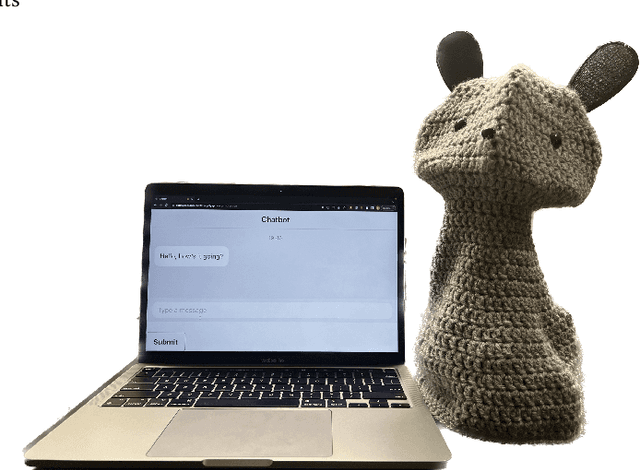


Abstract:Cognitive behavioral therapy (CBT) is a widely used therapeutic method for guiding individuals toward restructuring their thinking patterns as a means of addressing anxiety, depression, and other challenges. We developed a large language model (LLM)-powered prompt-engineered socially assistive robot (SAR) that guides participants through interactive CBT at-home exercises. We evaluated the performance of the SAR through a 15-day study with 38 university students randomly assigned to interact daily with the robot or a chatbot (using the same LLM), or complete traditional CBT worksheets throughout the duration of the study. We measured weekly therapeutic outcomes, changes in pre-/post-session anxiety measures, and adherence to completing CBT exercises. We found that self-reported measures of general psychological distress significantly decreased over the study period in the robot and worksheet conditions but not the chatbot condition. Furthermore, the SAR enabled significant single-session improvements for more sessions than the other two conditions combined. Our findings suggest that SAR-guided LLM-powered CBT may be as effective as traditional worksheet methods in supporting therapeutic progress from the beginning to the end of the study and superior in decreasing user anxiety immediately after completing the CBT exercise.
 Add to Chrome
Add to Chrome Add to Firefox
Add to Firefox Add to Edge
Add to Edge